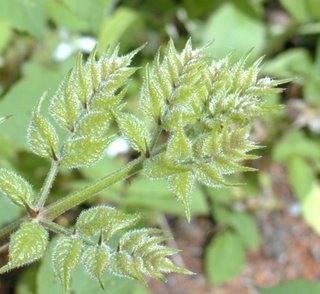::::::::::::::::::::::::::::::::::::::::::::::::::::::::::::::::::::::::::::::::::::::::::::::::::::
BACKUP ONLY
ORIGINAL IS HERE
http://wkdkigodatabase03.blogspot.com/2008/02/buds-of-trees.html
::::::::::::::::::::::::::::::::::::::::::::::::::::::::::::::::::::::::::::::::::::::::::::::::::::
Buds of trees (ko no me)
***** Location: Japan
***** Season: All spring
***** Category: Plant
*****************************
Explanation
Tree buds, who would not think of spring immediately. And in Japan, a lot of the sprouts end up on the dinner table and are eaten as tempura or in miso soup.
Some buds are early, some later in spring. Their beauty and vitality has been the theme of poetry since olden times. Their colors range from light greet to pink or even red.

tree buds, ko no me 木の芽 (このめ)
buds from special trees with names, nanoki no me
名木の芽(なのきのめ)
(like maples etc. see below)
..... ki no me きのめ、medachi 芽立(めだち)
..... kigi no me 木々の芽
mebuku 芽吹く(めぶく)
budds are swelling, kono me haru 木の芽張る(このめはる)
rain on the tree buds, konome ame
木の芽雨(このめあめ)
mountain with budding trees, konome yama
木の芽山(このめやま)
fence of budding trees, konome gaki
木の芽垣(このめがき)
sprout, tiller, shoot, bud, hikobae 蘖 (ひこばえ)
..... hikobayu ひこばゆ , yago やご
late spring
Coming out of cut-down trees or from the side of the stem or branches, they show great vitality and life energy.

....................................................................................
mulberry tree buds, kuwa no me 桑の芽(くわのめ)
buds of the willow, yanagi no me 柳の芽 (やなぎのめ)
..... me yanagi 芽柳(めやなぎ),
budding willow trees, bebari yanagi 芽ばり柳(めばりやなぎ)
mountain pepper buds, sanshoo no me
山椒の芽 (さんしょうのめ)
Also pronounced as "ki no mi" 木の実.
maple buds, kaede no me 楓の芽 (かえでのめ )
buds of the Chinese matrimony vine, kuko no me
枸杞の芽(くこのめ)
picking buds of the kuko vine, kuko tsumu 枸杞摘む(くこつむ)

They are used for Chinese medicine (kampo), so are the little red fruit later in the year.
tara no me, buds of the angelica tree
楤の芽 (たらのめ)
..... tara no me 多羅の芽(たらのめ), udo modoki うどもどき、udome うどめ、tarame たらめ、
picking tara buds, tara tsumu 楤摘む(たらつむ)
They are a delicacy prepared as tempura ! and have the taste of spring. In my area, many people pick the wild ones in the afternoon to have them real fresh for their dinner.


devil's walking stick (tree), Japanese angelica tree
(Aralia elata), tara no ki たらの木 (たらのき, タラノキ)
:::::::::::::::::::::::::::::::::::::::::::::::::::::::::::::::::::::::::::::::::::::::::::::::::::
.............................. Category SEASON
time for the tree buds, ko no me doki
木の芽時 (このめどき)
..... medachi doki 芽立時(めだちどき)
before the budding, medachi mae 芽立前(めだちまえ)
wind on the tree buds, konome kaze 木の芽風(このめかぜ)
spring wind on tree buds, konome harukaze 木の芽春風
spring rain on tree buds, konomi haruzame 木の芽春雨
fine weather on tree buds, konome bare 木の芽晴(このめばれ)
© Photo by Gabi Greve, 2007
*****************************
Worldwide use
*****************************
Things found on the way
*****************************
HAIKU
朝夕に 雫のふとる 木の芽哉
asayuu ni shizuku no futoru konome kana
morning and evening
the dew swells
on the buds
Chiyo-ni (1703-1775)
Tr. Patricia Donegan & Yoshie Ishibashi

:::::::::::::::::::::::::::::::::::::::::::::::::::::::::::::::::::::::::::::::::::::::::::::::::::
一雫こぼして延びる木の芽かな
hito shizuku koboshite nobiru konome kana
one drop falls
and it swells -
this tree bud
有井諸九 . Arai Shokyuu (1714~1781)
Tr. Gabi Greve
:::::::::::::::::::::::::::::::::::::::::::::::::::::::::::::::::::::::::::::::::::::::::::::::::::
Some Haiku by Issa
木々おのおの名乗り出たる木の芽哉
kigi ono-ono nanori idetaru ko no me kana
every tree
with its calling card...
spring buds
木々もめを開らくやみだの本願寺
kigi mo me o hiraku ya mida no honganji
the tree buds, too
open up...
Amida's Hongan Temple
深山木の芽出しもあへず喰れけり
miyama-gi no me dashi mo aezu kuware keri
deep mountain trees--
soon as buds appear
they're eaten
茨の芽も皆々人に喰れけり
bara no me mo mina-mina hito ni kuware keri
even wild rose buds--
all eaten
by people
Tr. David Lanoue
:::::::::::::::::::::::::::::::::::::::::::::::::::::::::::::::::::::::::::::::::::::::::::::::::::
木々の芽や新宅の庭とゝのはず
kigi no me ya shintaku no niwa totonowazu
The buds come out on the trees,
But the garden of the new house
Is not yet natural.
Masaoka Shiki 正岡子規
Tr. Blyth
Blyth's comment:
Thoreau says, of Wealland [s/b Welland] Canal:
"In the lapse of ages, Nature will recover and indemnify herself, and gradually plant fit shrubs and flowers along its borders....Thus all works pass directly out of the hands of the architect into the hands of Nature, to be perfected."
But what is interesting in Shiki's verse is the fact that it is the buds of the trees that bring out in reverse, the newness of the garden.
*****************************
Related words
BUDS of other plants

peony buds, botan no me 牡丹の芽 (ぼたんのめ)
early spring
These plants are rather indifferent toward the cold.
rose buds, bara no me 薔薇の芽 (ばらのめ)
early spring
The rose buds are a bit later than the peonies, usually in March. Some start in tints of pink, others rather green, some are round, some rather oblongated, others quite sharp. You can feel the power of life in these small buds.
:::::::::::::::::::::::::::::::::::::::::::::::::::::::::::::::::::::::::::::::::::::::::::::::::::::
blue spring sky -
the sound of a bud
ready to burst

rosebuds in snow -
the softness of his hand
on my shoulder

© Photos and Haiku by Gabi Greve, 2007
:::::::::::::::::::::::::::::::::::::::::::::::::::::::::::::::::::::::::::::::::::::::::::::::::::
***** Young leaves (wakaba, Japan)

Photo © Gabi Greve
:::::::::::::::::::::::::::::::::::::::::::::::::::::::::::::::::::::::::::::::::::::::::::::::::::
BACK TO
WASHOKU : Mori no Megumi
WASHOKU : General Information
:::::::::::::::::::::::::::::::::::::::::::::::::::::::::::::::::::::::::::::::::::::::::::::::::::
































